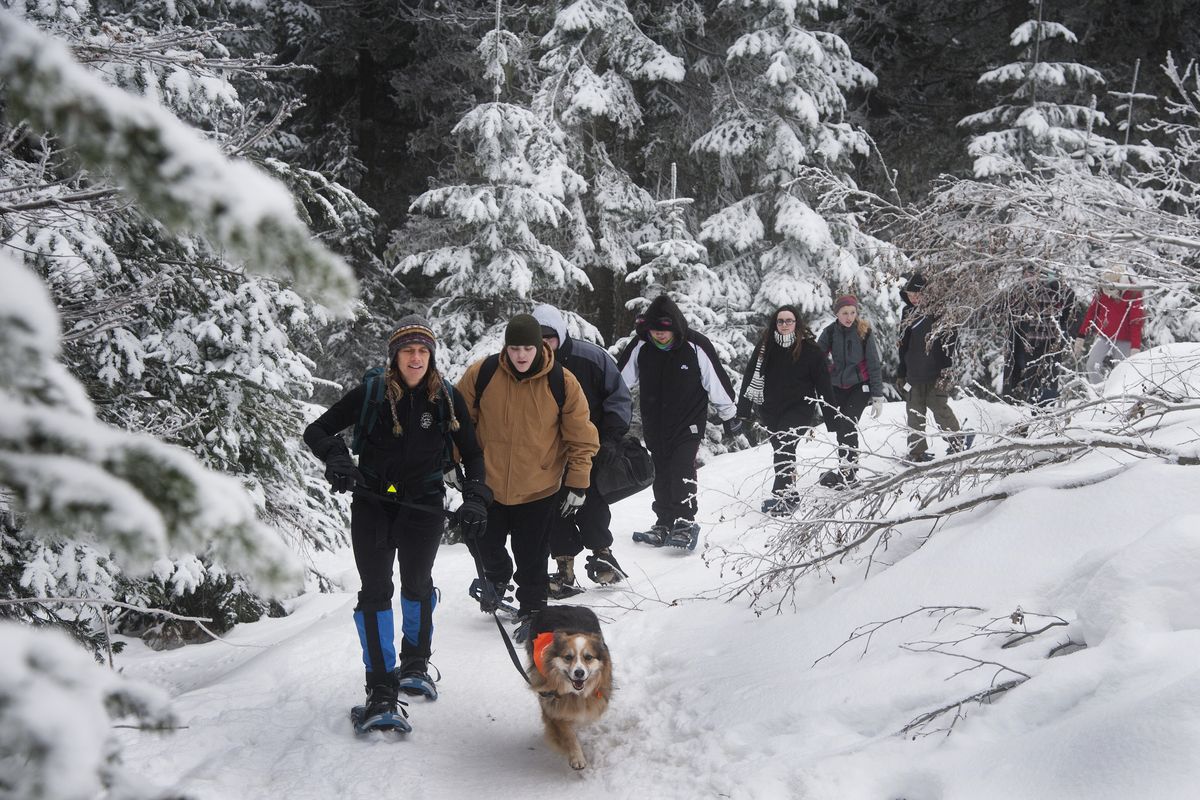Students snowshoe Mount Spokane, learn of safety, snowpack

Their breath caught in clouds of frosty air, but the frigid temperatures didn’t chill the enthusiasm of the 21 students from the Community School, as they gathered at Mount Spokane last week for a snowshoeing adventure.
This is the third year Kat Hall, conservation programs director for the Lands Council, has taken students to Mount Spokane to learn about winter safety and the importance of the snowpack in our region.
The field trip is part of Project Sustain, the Lands Council’s environmental education program. “The point is for the kids to realize the snow they’re digging in and throwing at their friends, will eventually be the water they put their canoes in on the river,” Hall said.
Earlier in the week, Hall visited the Community School and talked to the students about how to dress properly for their outdoor adventure. She also gave them an idea of what they’d see and experience on the mountain.
After a park ranger welcomed the group to Mount Spokane and gave them a brief overview of the park, the students were ready to don the snowshoes provided by Gonzaga Outdoors.
Hall demonstrated how to ensure the snowshoes were properly fastened. “There’s no left or right foot,” she said, “and you don’t need to take giant steps, just walk normally.”
Chloe Zimmerman, 14, smiled as she tried out her footwear. “This is going to be fun.”
But that fun was not without some challenges. The group trekked 1 mile to the Bald Knob picnic area, and while the distance may not seem like much, the elevation gain proved daunting to many of the snowshoers.
Once at Bald Knob, the students devoured sack lunches. Then they helped dig a snow pit and listened attentively as Hall talked about winter survival skills, how wildlife endure the winter months and how the snowpack affects our community water supply.
While at Bald Knob, the fog cleared revealing the top of Mount Spokane. The students also saw ample evidence of nearby wildlife.
“We saw rabbit, moose and deer tracks,” said Zayne Starr, 15.
When Hall talked about basic winter survival skills, including what to do if caught in an avalanche, the students took note. “Spread your arms and legs as wide as you can,” Starr said.
He was also impressed with the knowledge gleaned from the snow pit.
“Kat showed us the different layers of ice and snow,” he said. “It’s like looking at a history of the snowfall in Spokane this winter.”
Zimmerman nodded. “We got to actually see what Kat was talking about.”
Delaney Kahler elaborated. “We saw seven or eight layers. I learned the same snow melting off the mountain is the stuff we drink and the stuff we swim in.”
Starr wishes more schools would take their students outdoors. “I love snow,” he said. “It was a great learning experience.”
Community School teacher Brian Monger agreed. He said getting the kids out of the classroom and having them experience science in the real world is important. He was proud of his students’ perseverance and the way they helped each other during the difficult portions of the trek.
“Those smiles on their faces that said, ‘I did it!’ were incredible,” he said.
Seeing firsthand what had been discussed in the classroom made a lasting impression on Kahler.
“We learned how important it is to take care of the world we live in,” she said. “Every person counts.”